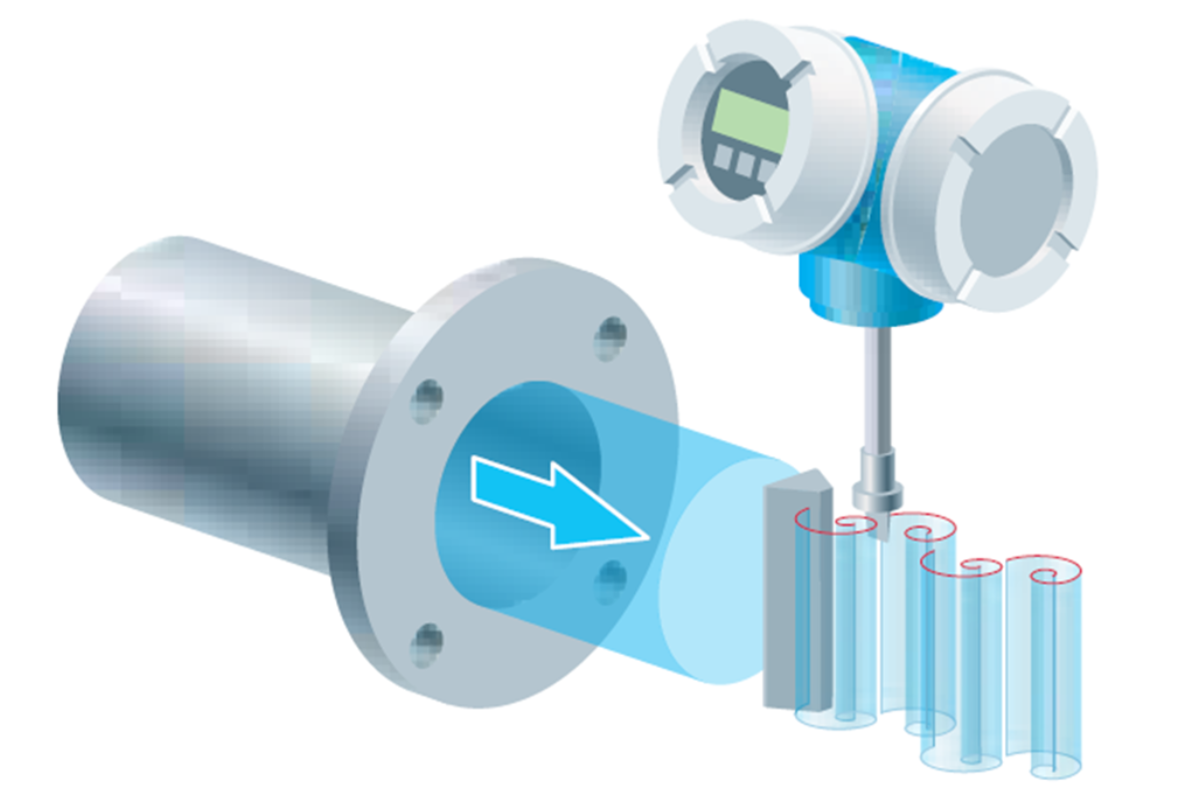
The main objective of steam injection is to reduce the oil viscosity and the interfacial tension, through the additional supply of heat energy to the rock and the fluids contained in the reservoir, increasing their mobility through the porous space. Therefore, it is very important to determine how much energy the reservoir requires, and how much energy is being provided, since it will depend on the mass flow and quality of the steam in each sand where steam is being injected.
There are several methods to calculate steam mass flow through algorithms, which depend on the data collected by sensors and instruments in the Steam Generator and/or Wellhead. Similarly, the flow can be determined by the orifice plate method. On the other hand, the steam dryness percentage or steam quality, is commonly determined by the conductivity and chlorides methods at the in let and outlet streams of the steam generator.
Flow and Steam Quality Measurement by the Vortex Method:
Another way to measure the flow and quality of steam is through the Vortex-type flowmeter, whose operation is based on the Von Karmán Vortex Street principle, which refers to the repetition of a vortex pattern (Whirlwinds) caused by the non-stationary separation of the fluid current that passes over a submerged body or a non-aerodynamic or disturbing body (1). Consequently, these whirlwinds can be detected and counted. The frequency “f” of
the vortex detachment is proportional to the flow speed “v” and inversely proportional to the width of the non-aerodynamic body. The value of “f” is independent of the viscosity and density of the fluid.
The local pressure changes that accompany the detachment of the whirlwinds (4) are detected by a piezoelectric sensor (2) and are converted, depending on their frequency, into electrical impulses; therefore, steam quality is registered by vibration as the fluid stream flows through the disturbing body. The detected signals are transmitted to transmitter device-panel view (3) for further processing.
This high-precision measurement system is recommended for flow and quality measurement of saturated and superheated steam; thus constituting a verification method to those commonly used. Currently, there are models of Vortex flow meters for operation in high pressure and high temperature environments; it represents a great advantage
To download the article, click here.


